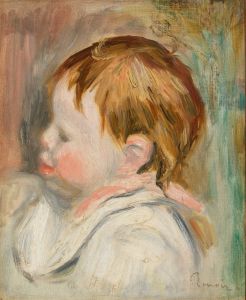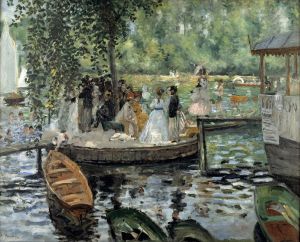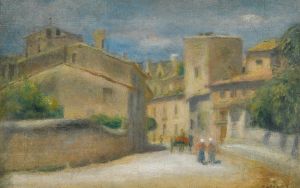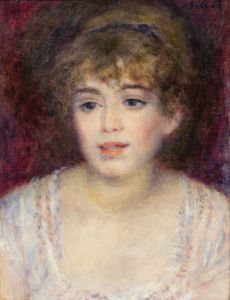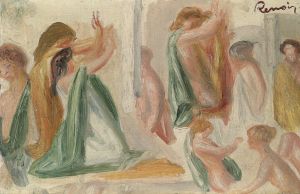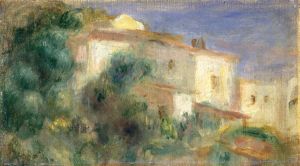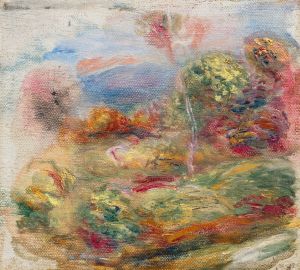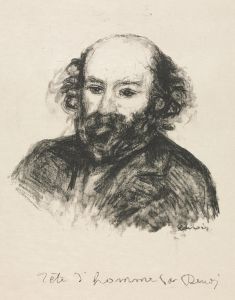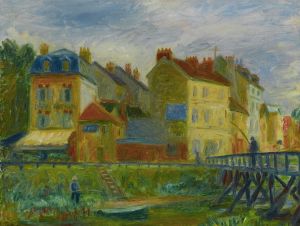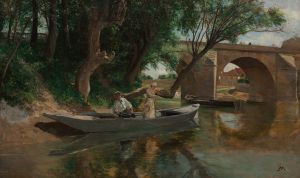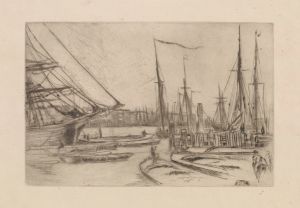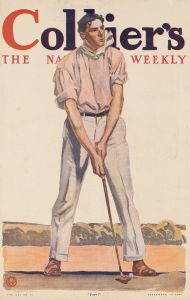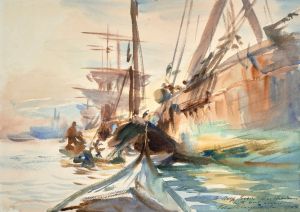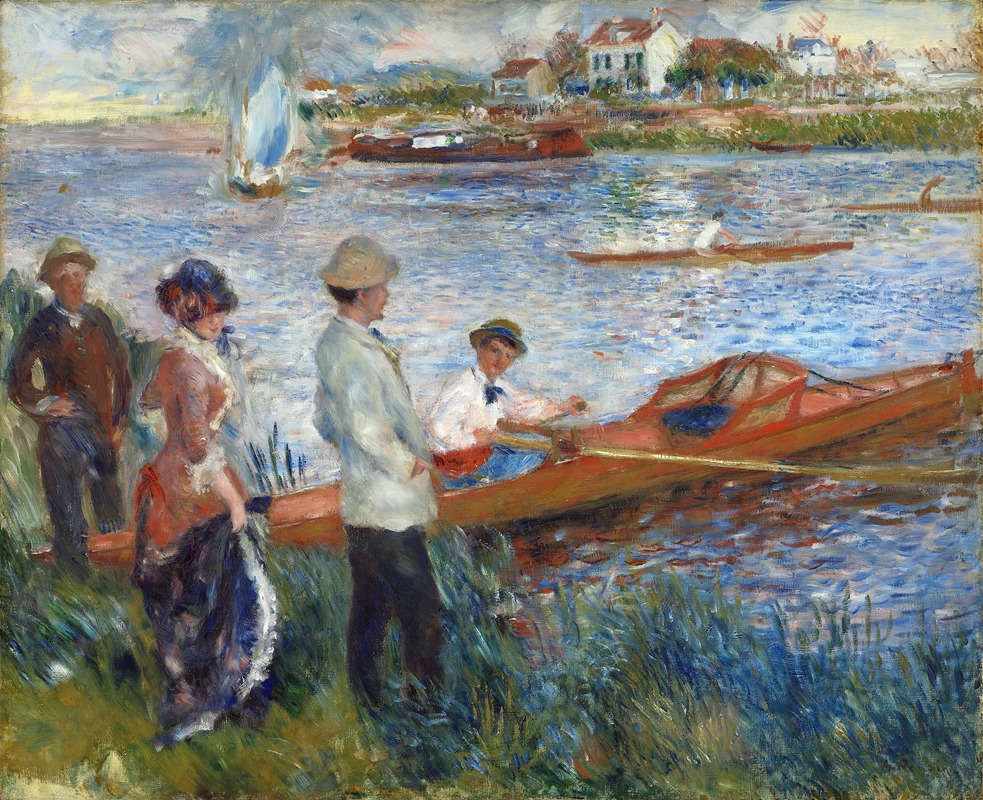
Oarsmen at Chatou
A hand-painted replica of Pierre-Auguste Renoir’s masterpiece Oarsmen at Chatou, meticulously crafted by professional artists to capture the true essence of the original. Each piece is created with museum-quality canvas and rare mineral pigments, carefully painted by experienced artists with delicate brushstrokes and rich, layered colors to perfectly recreate the texture of the original artwork. Unlike machine-printed reproductions, this hand-painted version brings the painting to life, infused with the artist’s emotions and skill in every stroke. Whether for personal collection or home decoration, it instantly elevates the artistic atmosphere of any space.
"Oarsmen at Chatou" is an oil painting created by the renowned French Impressionist artist Pierre-Auguste Renoir in 1879. This artwork is a quintessential example of Renoir's ability to capture the vibrancy and leisure of contemporary life during the late 19th century. The painting is part of the collection at the National Gallery of Art in Washington, D.C.
Renoir was a leading figure in the Impressionist movement, which sought to capture the effects of light and atmosphere in everyday scenes. "Oarsmen at Chatou" exemplifies this approach, depicting a lively scene along the Seine River, a popular location for leisure activities among Parisians of the time. The painting portrays a group of young men and women enjoying a sunny day by the river, with some figures engaged in rowing while others relax on the riverbank.
The setting of Chatou, a suburb of Paris, was a favored spot for Renoir and his contemporaries. It was known for its picturesque landscapes and the presence of the Maison Fournaise, a popular restaurant and boat rental establishment that attracted many artists and Parisians seeking recreation. The Seine River, with its gentle flow and scenic surroundings, provided an ideal backdrop for Renoir's exploration of light and color.
In "Oarsmen at Chatou," Renoir employs a vibrant palette and loose brushwork to convey the shimmering effects of sunlight on water and the lively atmosphere of the scene. The figures are depicted with a sense of immediacy and spontaneity, characteristic of Impressionist works. Renoir's use of color is particularly notable, with bright blues, greens, and whites dominating the composition, capturing the essence of a warm, sunny day.
The painting reflects Renoir's interest in the interplay of light and shadow, as well as his fascination with the human form in motion. The figures are arranged in a dynamic composition, with the oarsmen in the foreground creating a sense of movement and energy. The relaxed poses of the figures on the riverbank contrast with the activity on the water, adding to the painting's overall sense of balance and harmony.
"Oarsmen at Chatou" is also significant for its depiction of modern life and leisure, themes that were central to the Impressionist movement. The painting captures a moment of enjoyment and camaraderie, reflecting the social changes and cultural shifts occurring in France during the late 19th century. Renoir's focus on everyday scenes and his ability to infuse them with beauty and vitality contributed to the enduring appeal of his work.
Overall, "Oarsmen at Chatou" is a testament to Renoir's skill as a painter and his ability to capture the fleeting moments of life with grace and elegance. The painting remains a celebrated example of Impressionist art, admired for its vibrant depiction of leisure and its masterful use of color and light.





